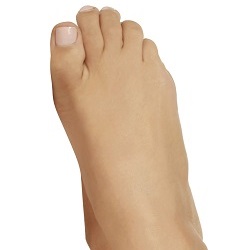Treating Stubborn Toenail Fungus
Published on January 4, 2019 by Westchester Center For Dermatology
Toenail fungus, also called onychomycosis, is a slow-spreading infection growing in the nail or the skin beneath it. It affects people all over the world. It’s caused by the same fungi that cause athlete’s foot, so people prone to athlete’s foot are also vulnerable to toenail fungal infection.
As people get older, they become more susceptible to this infection. People with diseases like diabetes, issues with limb circulation, or suppressed immune systems are highly prone to toenail fungal infections.
What Are the Symptoms of Toenail Fungal Infection?
Toenail fungal infections usually grow underneath the toenail and start at the tip of the nail, where it is trimmed.
People with a toenail fungal infection experience:
• Thickening of the nail
• White, yellow or brown discoloration of the skin beneath the nail
• Increase in keratin, a white substance that forms beneath the skin and gives form to nails and skin
• Looseness of the nail
How to Treat a Toenail Fungal Infection
Toenail fungal infections can be a challenge to treat, but thankfully, there are over-the-counter topical medications that can alleviate the issue. The treatment, however, depends on the seriousness of the problem and the type of fungus causing the infection.
One of the most commonly prescribed topical antifungal creams is Penlac, which is applied directly on the infected nail. It may, however, take months to see results. Penlac is usually prescribed to people with mild to moderate infections in which the fungus hasn’t spread to the matrix, which the main growth center of the nail.
Another topical antifungal prescription is efinaconazole (Jublia), which is approved for use by the U.S. Food and Drug Administration. This medication is usually prescribed for forty-eight weeks and has to be applied once a day. This medication is seen to be more effective in clearing toenail fungal infections. It gets through the hard nail surface and kills the underlying fungus.
Prevention
Prevention is always better than cure, and toenail fungal infections are no exception. To prevent this issue, you should always keep your feet dry and clean. Make sure you wear waterproof sandals and change your socks daily. Keep your toenails short and avoid wearing tight hosiery.
Do You Have a Toenail Fungal Infection?
If you are suffering from a toenail fungal infection, then you should visit Dr. David Kriegel, an experienced dermatologic surgeon. Dr. Kriegel will examine your nails and take some scraped debris or nail clippings for an evaluation by the lab. This helps him identify the type of fungus and then recommend the appropriate treatment for it.
More often than not, conditions like psoriasis can show symptoms similar to a fungal infection. Certain microorganisms like bacteria and yeast can infect toenails. Some people tend to self-diagnose and treat the condition, often failing to reap results. Therefore, it’s always recommended that you visit a medical professional for a thorough evaluation.
Scheduling Your Consultation
Schedule a consultation with Dr. Kriegel – get in contact with our office today and set up your helpful appointment.



